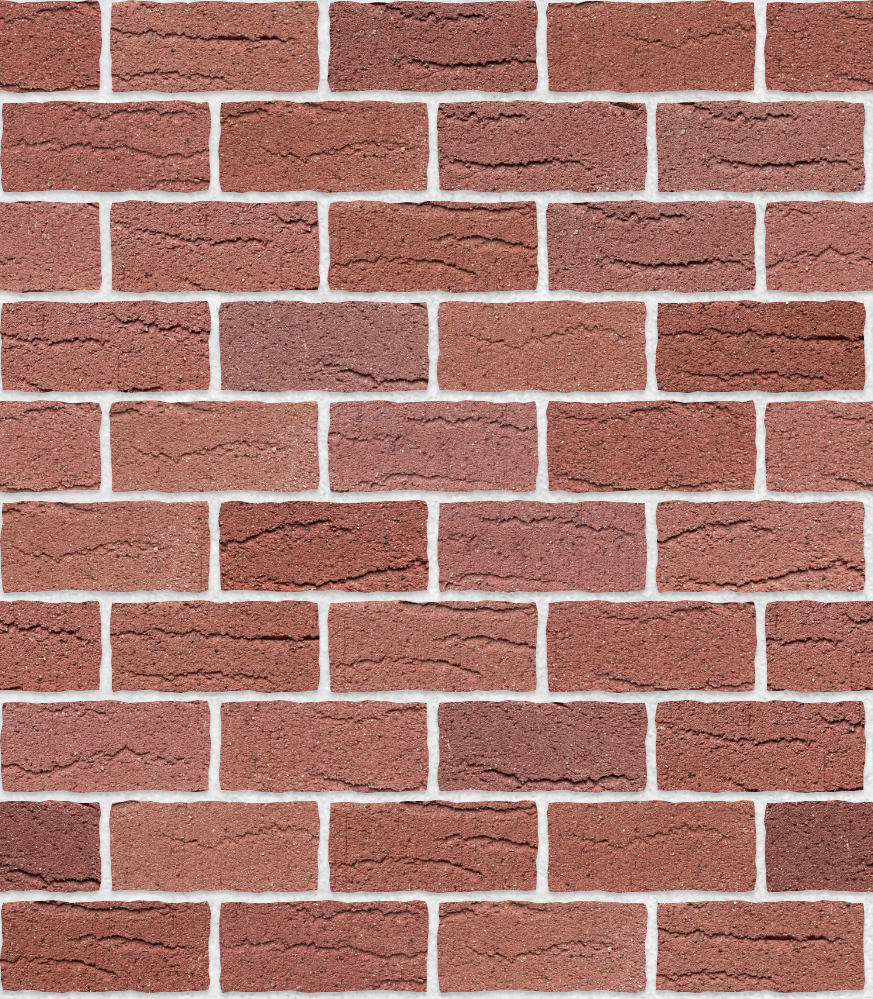Creased Brick Stretcher
Category
Brick
Download
Edit
Bricks are one of the most common materials in architecture and construction. With recorded uses dating back over 9000 years, from its origins as mud and straw adobe bricks, they are popular due to their readily available raw materials, ease of manufacture, low cost, ease of maintenance, basic-skilled assembly and attractive variety of colours, textures and finishes. Modern clay bricks are manufactured by firing clay in moulds, although this method dates back to ancient Egyptian times. They can be cut to standard sizes to form a versatile, durable building product, or specially manufactured to suit a variety of angles, curves and unique shapes for decorative purposes on organic forms. Hard-wearing and with excellent structural and thermal properties, they are a popular, efficient, human-scaled material for paving, load-bearing walls, cladding systems, landscaping and interior decorative walls, while a variety of finishes and palettes within the one product can create rustic, weathered, industrial aesthetics increasingly popular in bespoke, contemporary domestic, hospitality and workplace environments; practical, perfunctory settings; or decorative façades. Preferred for their domestic, human scale, bricks are one of the easiest construction materials to handle and build with when combined and laid with cementitious mortars. They are well suited to domestic, care, primary education and community building types in all climatic settings provided they are manufactured correctly and to the right specifications with respect to their locale.
With a warm, light, rough, grainy, varied mix of pastel, rose and wine red bricks and a creased surface finish, these bricks are ideal for use where a consistent, homogenous appearance is desired, be it on large scale construction projects such as workplaces and factory units, or lower budget, small scale works from domestic extensions, gardens and homes to schools and healthcare facilities. Creased bricks are named due to the unique finish on the brick face, which is specially applied to brick clay before the heating process – the resulting, slightly wavy texture on an otherwise smooth surface appears slightly crumpled like clothing, or mimics the gentle cuts and erosions by water on stone, creating the appearance of a dynamic, shifting building and striking a balance between contemporary, smooth look and an industrial, aged, weathered aesthetic. The bright reds of this brick texture’s tone and porosity are the result of high iron content in clay soils, although modern pigments and treatments can recreate the same look without requiring specific clay compositions and is now a less common tone of brick, with rustic, orange-browns and light, buff colours proving more popular in recent times. Most modern bricks have much less red colouring or iron content however, red clay bricks were regularly used in Europe from around the 12th century, when northern European countries traded materials, knowledge and design ideologies with Italy during the Gothic then Renaissance eras. Bricks had been used extensively throughout the Roman Empire thanks to the Romans’ invention of the mobile kiln, enabling brick manufacture across Rome’s territories, using an increased range of local clay and soil compositions. Before then, brick had generally been limited to hot, dry climates as found in Africa, southern Asian and southern American regions where bricks dried and cured quickly in the heat, especially when composed from mud and straw. Bricks became exceptionally popular in densely populated cities in the 17th century, particularly London, due to their far superior fire retarding properties compared to timber, after particularly serious, destructive urban fires that ripped through older timber building stock. Other cities followed suit during the 18th century industrial revolution, as the vibrant reds stood out against the gloom of polluted, damp, foggy environments, helping to highlight key landmarks around the city, while proving a hardy, enduring, cost effective, simple to construct, reliable, fairly impervious, consistently dimensioned building unit protecting against the menace of damp, pollutant filled air or surrounding ground conditions. Red brick was then popularised in northern America and other English and Dutch territories, through early émigrés taking their masonry skills abroad. This creased red brick texture possess clean, modern lines, working well in contemporary settings, but equally as a sympathetic pairing to historic brick, stone or timber buildings.
A seamless brick texture with creased brick arranged in a stretcher pattern. Seamless textures can be tiled repeatedly across a surface without visible seams making them useful for architectural drawings and 3D models. This image can be used as a SketchUp texture, Revit material or imported into Photoshop for use in 2D illustrations. A high resolution version of this texture is available, as well as CAD hatches and PBR maps with Architextures Pro.


